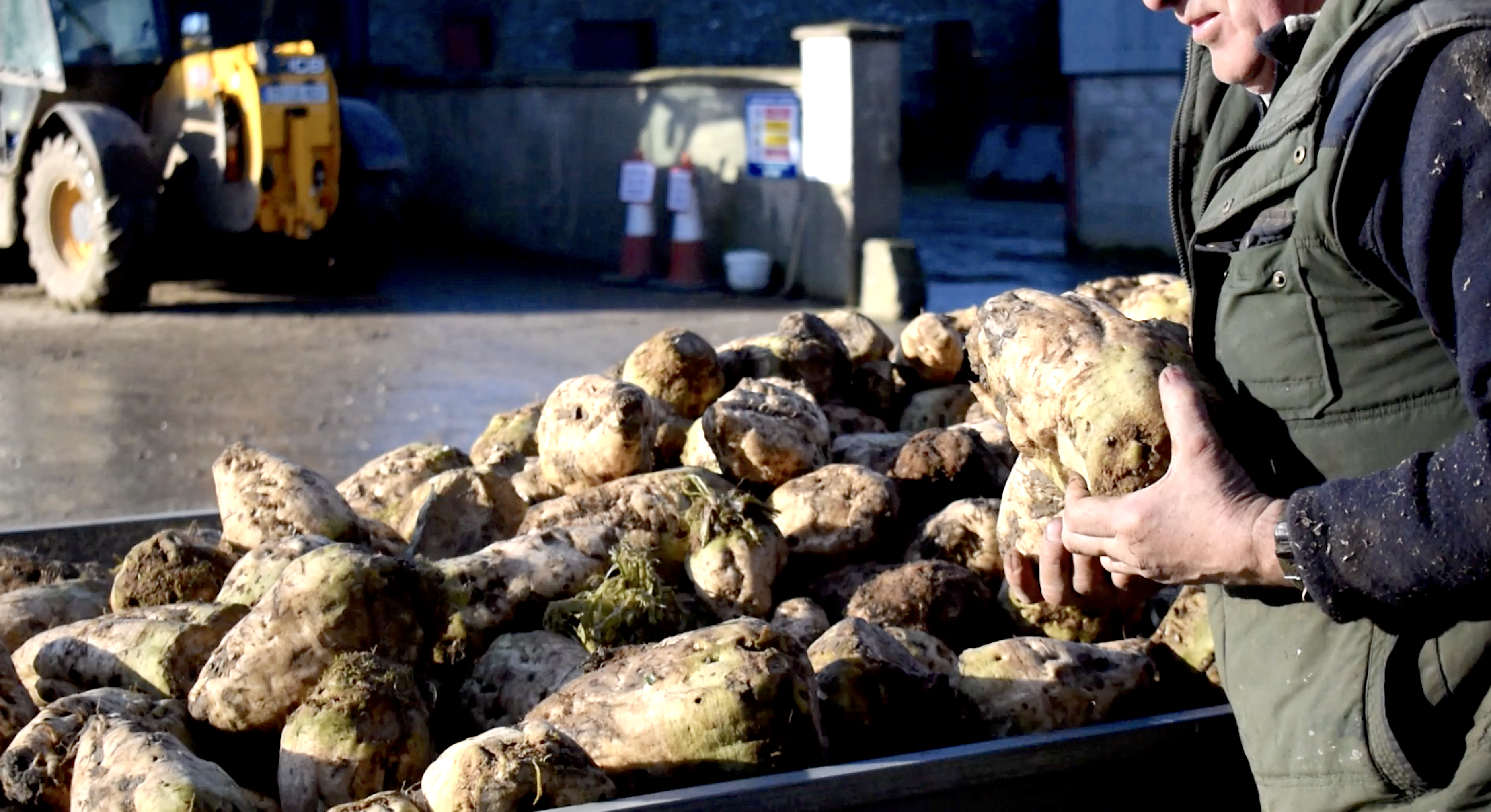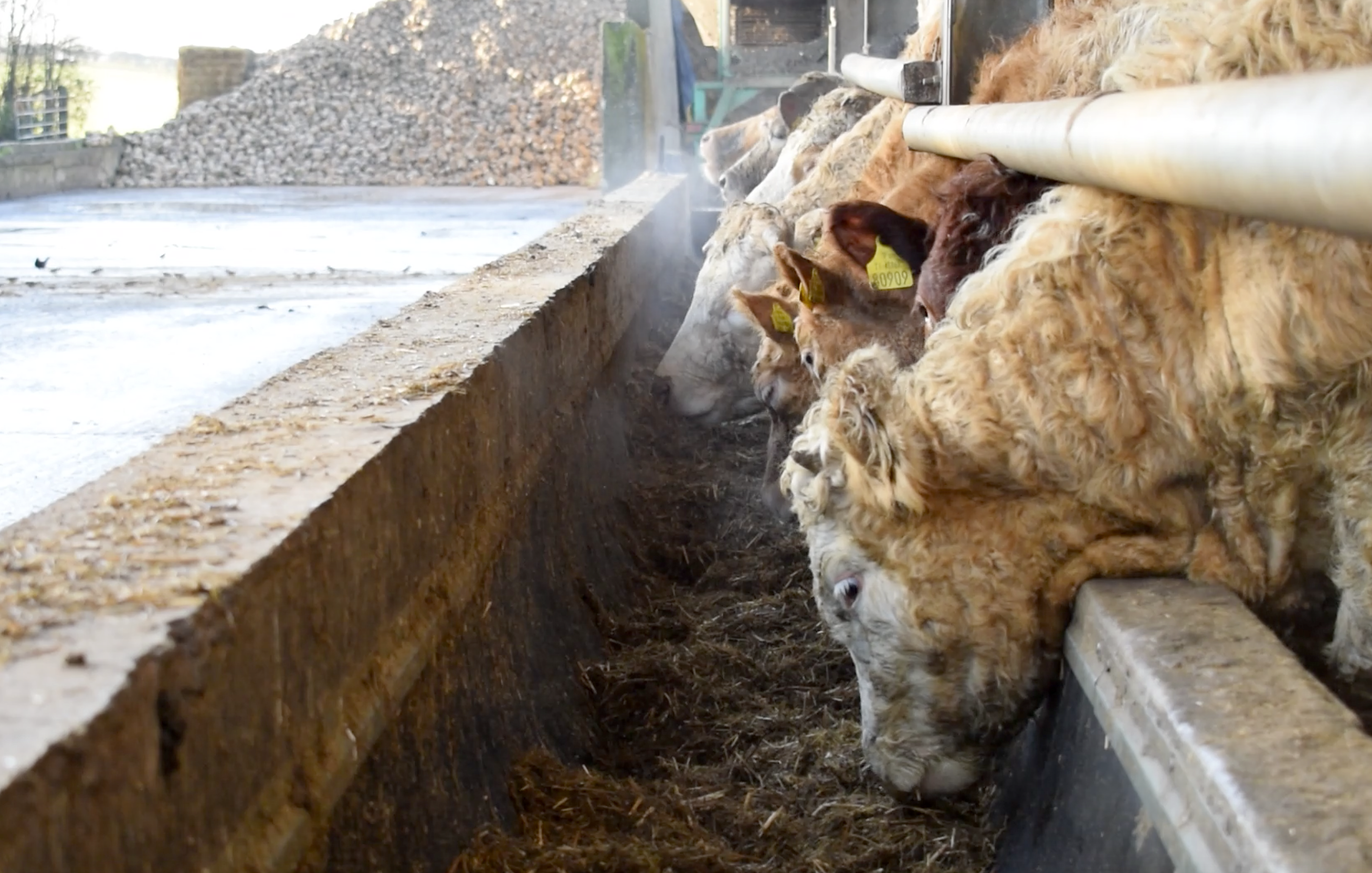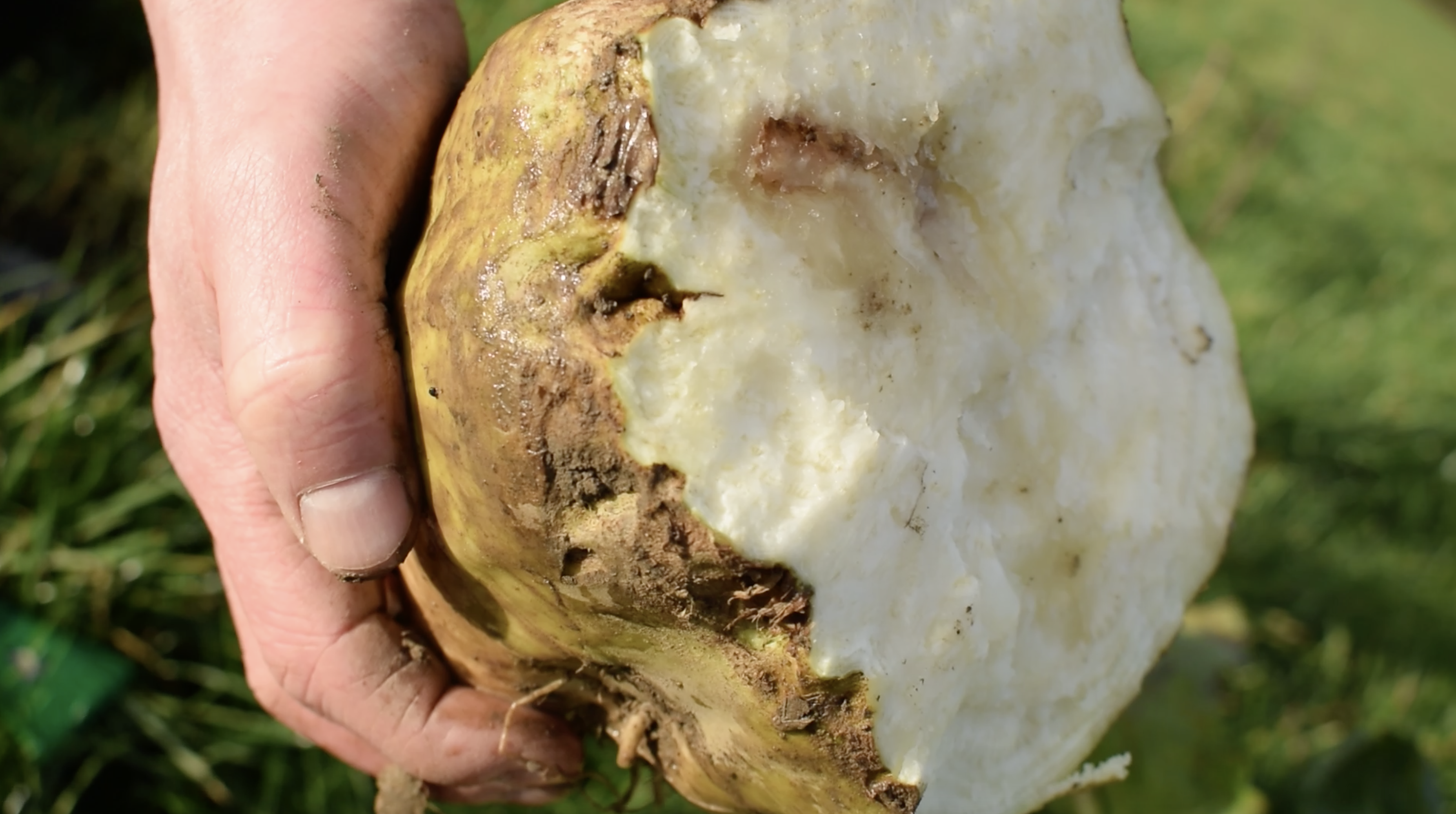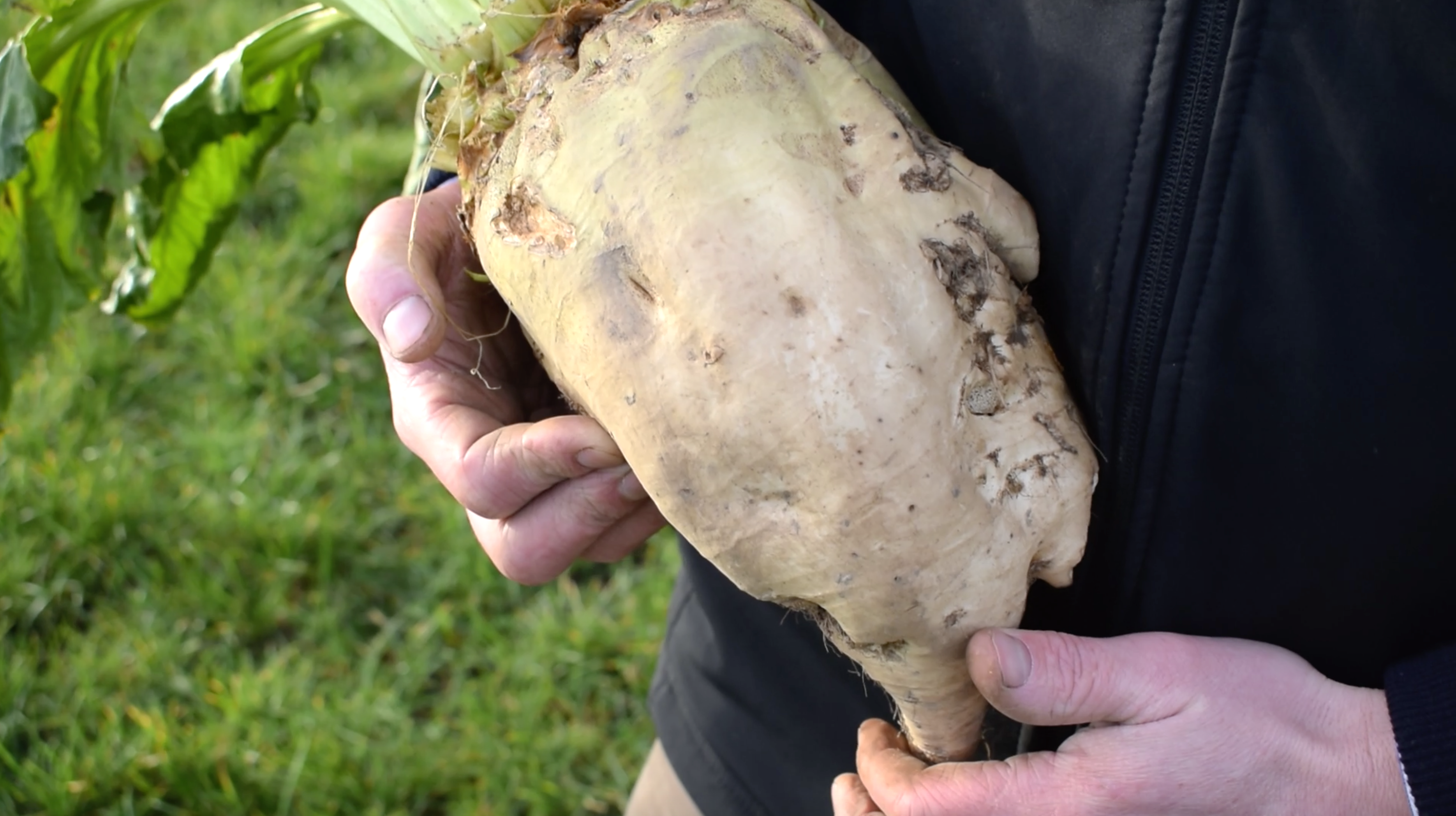With the growing population of cattle and cow numbers across Ireland, many farmers are turning to growing or feeding fodder beet.
Fodder beet is a high-energy feed with the potential to deliver results for both the grower and the consumer. Beet is one of the highest-energy sources per kilogram of dry matter (DM) of all the forage crops and over 20,000ac are grown in Ireland each year.
10 Best Practices When Growing Or Feeding Beet
1. Rotation
Beet should only be grown after two years have elapsed since a beet, brassica or oil seed rape crop was grown. Scutch, thistles and potatoes can be an issue based on the previous rotation.
2. Sowing period
Fodder beet can be sown from early April. Beet is a sensitive crop and will not thrive in harsh conditions. Delays after mid-April will reduce yields by about 4% per week. Latest sowing time is late May.
3. Seeding rates
Seeds are precision drilled. Aim to establish 30,000 plants per acre. Average field emergence for fodder beet is about 65% (range 55% to 80%).
With 56cm (22in) row widths and 18cm (7in) spacing, 40,700 seeds are planted per acre; assuming 74% establishment, this gives 30,000 plants per acre. It’s advisable to sow at a depth of 3.2cm.
Most drills were designed to be driven at 3mph, so watch your forward speed to ensure even depth and seed rate.
4. Lime and fertiliser
Target pH of 7 and, ideally, lime should be applied one year ahead of growing a beet crop. Farm yard manure (FYM) can be applied at heavy rates and should be calculated in fertiliser applications.
Fertiliser recommendations are shown in the following table:
Beet crops need boron. Choose a compound fertiliser with boron and apply before sowing and mix into soil. A nitrogen top dressing can be applied at the four-to-eight leaf stage. Click here to watch more beet videos
5. Weed control
Poor weed control is the most common cause of crop failure. The aim is to keep the crop weed free until at least eight weeks after emergence.
One tall weed above the canopy in a metre square (m²) has the capacity to reduce yield by 10%. T1 timing is generally at 18-21 days with T2 at 10-14 days post T1.
6. Soil borne pests and diseases
With the ban on use of neonicotinoids as a seed treatment for beet, the best and latest offering is a seed treatment called FORCE 20 CS. The active ingredient, Tefluthrin, expresses a strong vapour pressure in the soil.
Therefore, it spreads in the soil and penetrates the insect’s cuticle, causing a fast feeding stop and death. In addition, Tefluthrin has a strong repellence effect, giving additional protection to seedlings.
It is effective against springtails; symphlids; millipedes; and pygmy beetle.
Ramularia leaf spot and rust are the main problems and usually occur in the autumn. They can result in severe defoliation, which will increase harvesting losses with belt-lifting harvesters.
Crops to be harvested after November 1 should be treated with a fungicide in late July or early August.
7. Costs of crop establishment
Below is a table showing a Teagasc summary of crop establishment costs.
8. Variety choice
Fodder beet varieties are generally classified by their dry matter content and root colour. Traditionally in Ireland the demand is for a white beet with high DM (dry matter) content such as Magnum.
Choose varieties that are proven, with high DM score, high leaf score and low dirt levels.
9. Feeding beet
Beet is low in protein and minerals, so it needs to be balanced. The sugar content of beet will drive intakes and improve performance.
Ideally beet should be washed if dirty and chopped to avoid choking. Beet should be introduced gradually with feeding rates increased to 10-15kg/head/day. A nutritionist will be best placed to plan diets.
Typical analysis:
- Dry matter yield: 13-20t/ha;
- Fresh yield: 70-110t/ha;
- Dry matter: 18-20%;
- Metabolisable energy (ME) as MJ/kg of dry matter: 13.5.
10. Storage
Beet can be stored outdoors in clamps but be wary of frost. For long-term storage, beet can be ensiled with with maize or pulp nuts at a rate of 5:1. This is an ideal high-energy feed for buffer feeding in spring time or intensive cattle finishing.
Success stories
Brian Kirk, a farmer from Co. Louth, said: “We swapped to Magnum because of the leaf cover and the high dry matter. Magnum yields over 30t.”
Another Co. Louth farmer Patrick Byrne said: “Green energy is the way forward. Magnum is suitable for AD plants. For dairy production it’s unreal, cow go up in their milk.”
Meanwhile, Gerry Giggins – a nutritionist – said: “If cattle had pocket money, it would be beet they’d buy. Feeding fodder beet increases DM intakes and increases cattle performance.”
The agricultural manager at Flynns of Lackagh, Co. Galway, Ronan Carr, said: “Magnum is a popular variety because of its high dry matter content and proven results.”
More information
Has your field of Magnum got what it takes to be crowned the best in Ireland?
If you would like to be in with the chance of winning a trip to Denmark, contact your Magnum supplier or Interchem on: 01-4518959; or visit the company’s website.
If you want to watch more beet videos click here









